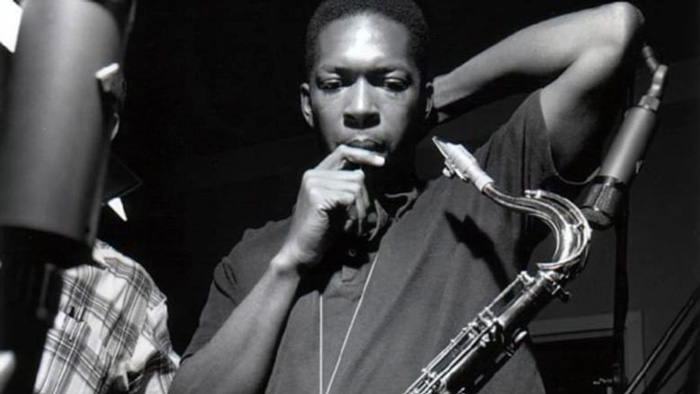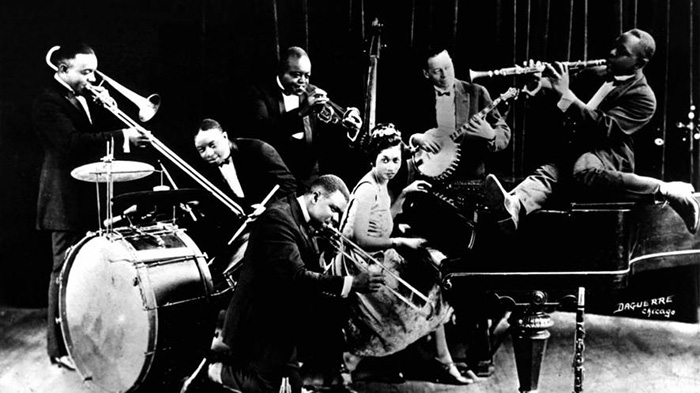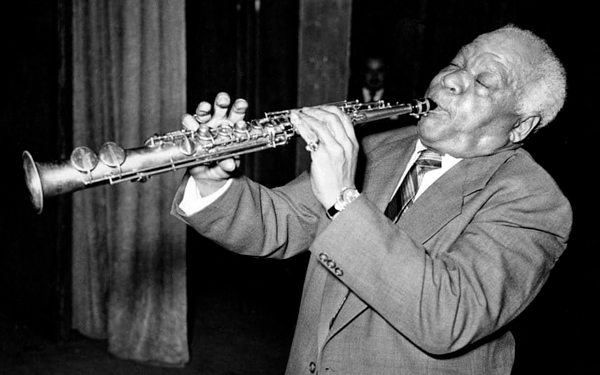Ultimate Guide: The History of Jazz
24th October 2019Jazz is one of the most iconic genres of music and it’s a music style with so much history and context. Jazz is a type of music that was born in the USA, and has it’s history entwined and rooted through the country’s own sociological and political history too.

The origins of Jazz music
Most people agree that Jazz music was started and originated from Blues music. The Blues is a kind of music (similar to Jazz) that was inspired by the African and European immigrants that came to the USA in the early 1800s. The African Americans who began singing the Blues were inspired by the pain of lost love, suffering and injustice of many people’s lives at that period of time. The Blues is known as a music genre that challenged and faced adversity.
Stylistic origins of Jazz music
Stylistically, the Blues originated from the local hymns, work songs, and field hollers from the people who sung the songs – and much of the music was reminiscent of these parts of life. Because of this, the music was heart-felt, somewhat spiritual and used a lot in social gatherings (such as weddings and funerals). The music itself is known for syncopated rhythms, polyphonic ensemble playing and differing degrees of improvisation. This improvisation is something that Jazz adopted and is now quite well known for.
Most people will agree that Blues music is the foundation of Jazz music, and the Blues is where Jazz began its journey and began evolving into its own genre.

New Orleans
New Orleans is the hub in the USA where Jazz evolved and grew into its own genre. New Orleans was a musical centre for Blues and Jazz, and remains that way to this day – with many performers still having regular musical shows.
The distinctive Jazz style of music we know and love today, began it’s evolution in New Orleans – and it’s between 1910 and 1915 that the collective ensemble started to take shape. It’s also around this time that the ensemble practise within Jazz also emerged.
At this time in history, Jazz was primarily a genre of music performed and played by African Americans, and despite economical reasons limiting their choice of instruments, there was still a variety of instruments used in Jazz such as; clarinet, trombone, cornet, bass, piano and the banjo. The saxophone (although widely associated with Jazz now) was used during this early period of Jazz music, as it was considered too expensive.
Louis Armstrong and his influence
It was around the early stages of Jazz, that Jazz legend Louis Armstrong was born. He was one of the most important musicians in the Jazz genre, and perhaps in any genre of music.
He was born in New Orleans, on the 4th of August 1901 and would go onto shape the course of southern music, including Jazz. Armstrong began playing instruments aged 13, the first being the Cornet. As he grew into his musical talent, he developed a keen interest in the Jazz Solo – a type of musical improvisation. Armstrong also developed the idea in Jazz music, that musicians could be playing during breaks, and then that expanded further in musicians playing individual slots and solos. This soon became the norm in the genre, because of the influence he had over it.

The first jazz recordings
Interestingly, although the Jazz music genre is rooted in the Afraican American culture and history, the first official recordings of Jazz music were done in NYC (on the East coast) on January 30, 1917. These recordings were of a group of white musicians, called the Original Dixieland Jazz Band.
Many people often remark that these recordings do a dis-service to the original Jazz music in New Orleans, and present a different musical picture to what the music scene was actually like.
New Orleans musicians
By 1915-1920 New Orleans was home to many of the greatest Jazz musicians. Some of these included; Keppard, Buddy Bolden, Buddy Petit, Bechet and Johnson.

Jazz and Swing music
As the years went on, Jazz music began to grow and evolve with the times. In the 1930s, swing was something that began to enter the space of Jazz music. Swing was an optimistic avenue for jazz, a type of music encouraging people to dance and ‘swing’. The idea of swing music is to get people on their feet, and fill people will a general sense of optimism.
Interestingly, the swing style of Jazz emerged during the Great Depression, and was often viewed as the uplifting music that got everyone through such a dark era of history. Orchestra leaders embraced the genre, with orchestra leaders such as Count Basie, Duke Ellington and Fletcher Henderson leading some of the best Jazz bands around that time.
It was Armstrong (mentioned above) that had a real impact on Swing Jazz music. He was the first ‘superstar’ of Jazz music, and it was the swing variety that he really launched into popularity.
Fun facts about Jazz music:
- The drum set was invented by jazz musicians.
- Jazz inspired dances include the Black Bottom, Charleston, and the Trot.
- The word “cool” and “hip” were originally jazz terms
- “Bread” was a term used to describe money in Jazz music.
- The United Nations named April 30th as the official International Jazz Day